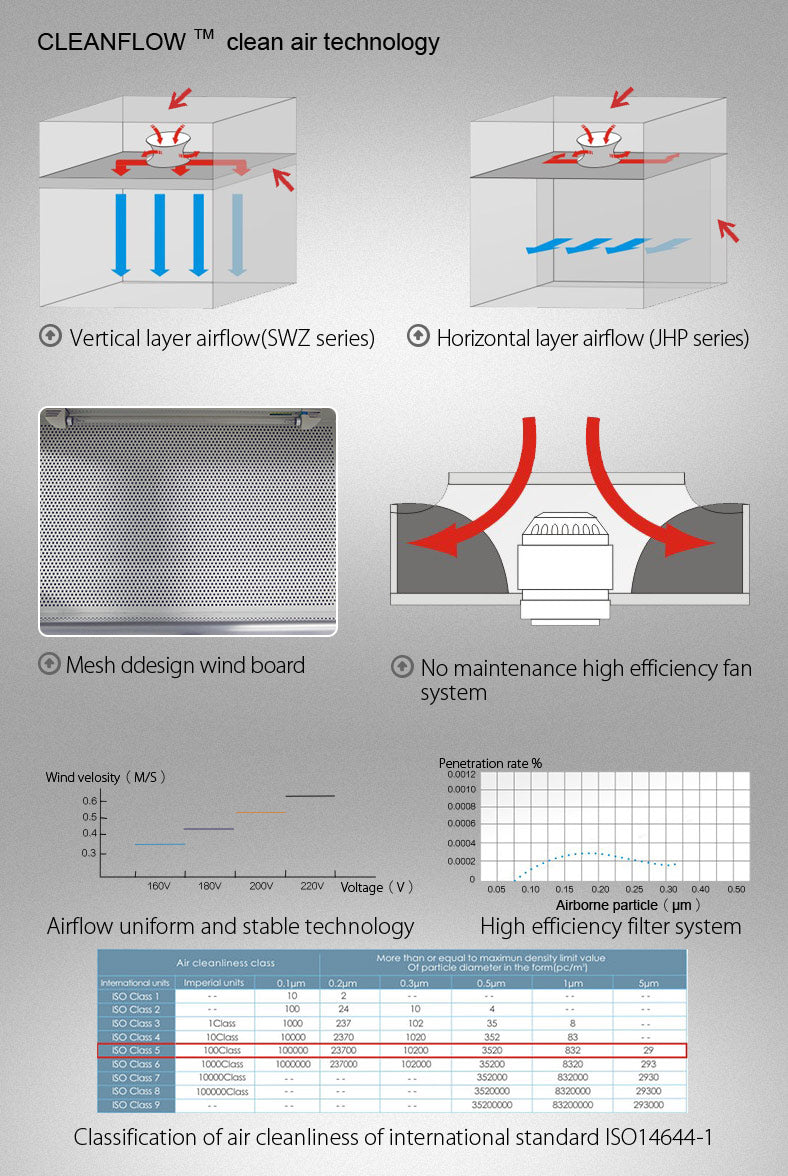The Kenton manufactured Laminar Flow Cabinet's industry standard JG/T292-2010 requires the Laminar Flow Cabinet mainly detects leaks through scanning, specifically referring to the leakage holes in the (or ultra-high efficiency) air filter material and its frame, the filter and installation Detection of aerosol leakage caused by poor sealing of frame contact parts, incorrect installation of filters, etc.
The detection method is based on the ratio (percentage) of the concentration of downstream consumables to the concentration of upstream consumables to evaluate whether it is a leak. When using atmospheric dust, the number of downstream consumables can be used to evaluate, and the concentration should be ≤3 particles/L. Use the DOP method to detect The Laminar Flow Cabinet used for biological cleaning is also tested for the concentration of sedimentation bacteria, and the concentration is ≤0.5cfu/(dish.0.5h).
During detection, atmospheric dust dispersed aerosols are used as pollution sources. When the above indicators cannot be met, polydispersed aerosols (such as PSL, DEHS, DOP, etc.) should be generated, and laser particle high-efficiency particles or the lower side root of the air filter are used to filter the surface 20- 30mm, scan along the entire surface, symmetry and frame joints, etc., with a scanning rate of 20-30mm/s.


